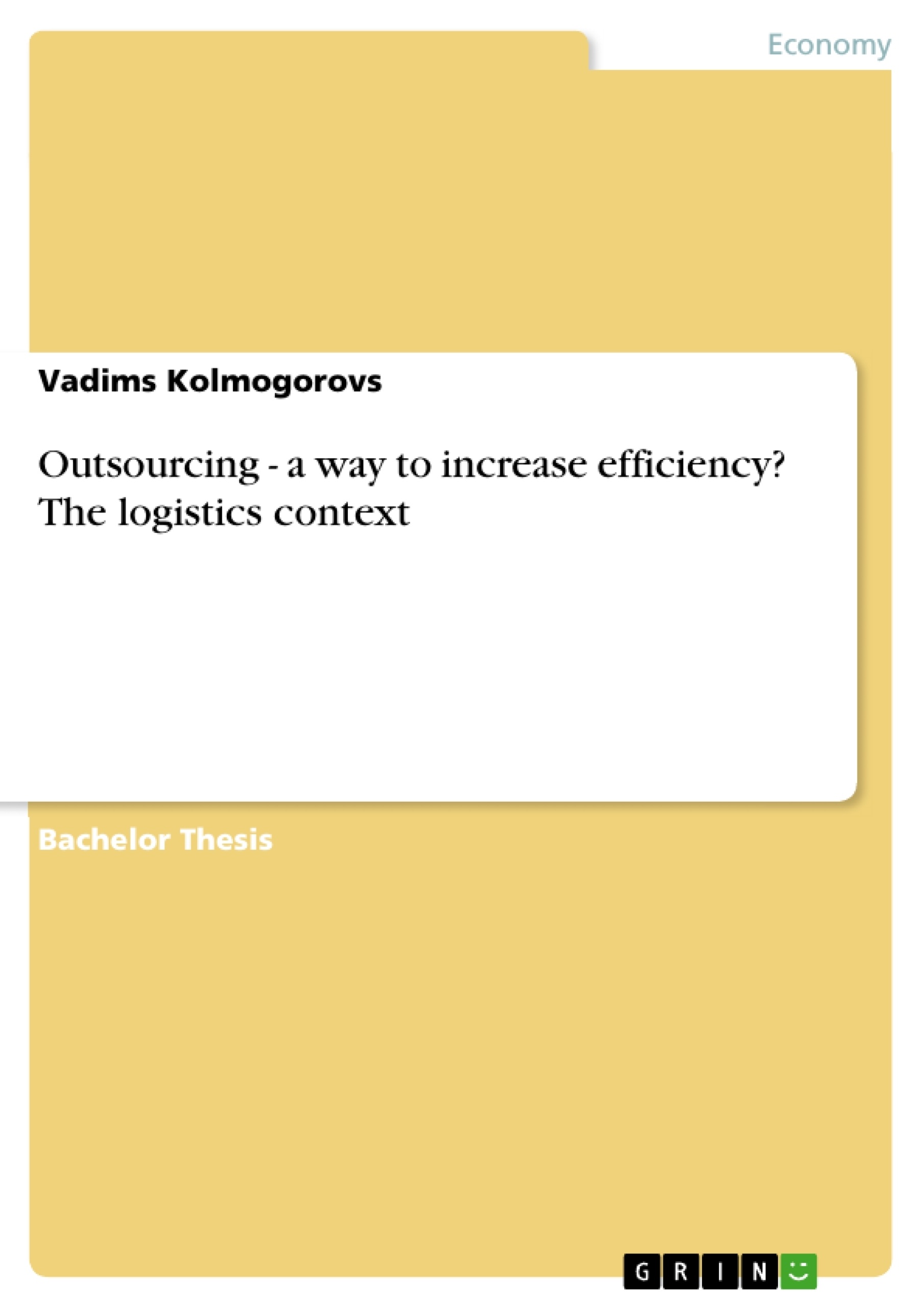Supply Chain Management (SCM) is a management concept aimed at organising and optimising the complete value chain from sourcing raw materials to the final customer regardless of organisational boundaries. In recent years, the strategy of concentrating on core competencies of companies led to a vertical disintegration of processes along the value chain. Practical experience shows that companies focusing on their core competencies in first turn outsource logistics operations within their supply chain management to external service providers.
Outsourcing is defined as “the practice of buying goods and services from outside suppliers, rather than producing them within a firm.” Harvard Business Review(HBR), the popular management journal recently listed outsourcing as one of the most influential concepts coined in the last 75 years. A fundamental question to ask in this work is whether outsourcing is really value enhancing and, in particular, whether the firm that undertakes outsourcing becomes more efficient as a result. In the context of this work the degree of efficiency will be addressed by analysing the input side as labour costs and capital for initial investments.
It will be shown that in an attempt to increase efficiency by reducing expenses and turning fixed costs into variable costs, companies pursue restructuring procedures that include outsourcing of non-core activities to specialists having a lower cost base due to better economies of scale and scope. In addition, efficiency may also be improved because adjusting output to variations in demand and maintaining the quality of inputs may be easier via enforcing contracts with outside suppliers than in dealing with a strongly unionized internal workforce.
Inhaltsverzeichnis (Table of Contents)
- Introduction
- 1. Theoretical background
- 1.1 The concept of core competence as a basis for outsourcing
- 1.1.1 Identifying Core Competencies
- 1.2 Outsourcing and supply chain management: common trends
- 1.2.1 Reduction of vertical integration and short term focus
- 1.2.2 Avoidance of high capital investments
- 1.2.3 SCM as core competence
- 1.2.4 Cooperation management
- 2. Defining Supply Chain Management
- 2.1 Definitions
- 2.2 SCM perspectives with particular reference to outsourcing
- 2.2.1 Applications outsourcing
- 2.2.2 Forth Party Logistics
- 2.2.3 Third Party Logistics
- 3. Logistics Outsourcing
- 3.1 Initial point
- 3.2 Logistics functions and its outsourcing potential
- 3.2.1 Transportation
- 3.2.2 Warehousing
- 3.2.3 Shipment consolidation
- 3.2.4 Freight Forwarding
- 3.2.5 Invoice audit
- 24. Benefits and potential pitfalls of outsourcing
- 4.1 Benefits of outsourcing
- 4.1.1 Cost reduction
- 4.1.2 Avoidance of major investments
- 4.1.3 Wider skills pool
- 4.1.4 Quality of service
- 4.1.5 Higher flexibility
- 4.1.6 Improved ratios
- 4.1.7 Transformation of fixed costs into variable costs
- 4.1.8 Reduction of capital commitment
- 4.2 Potential pitfalls of outsourcing
- 4.2.1 Poor or non-performance
- 4.2.2 Loss of logistics know-how
- 4.2.3 Start up difficulties
- 4.2.4 Loss of motivation
- 4.2.5 Business transition and social plan
- 4.2.6 Dependency on the vendor
- 5. Planning Stage
- 5.1 Outsourcing Forms
- 5.2 Identifying potential providers
- 5.3 Request for proposal
- 5.4 Selecting the vendor
- 5.4.1 Evaluation criteria
- 5.4.2 Establishing a scoring system
- 5.4.3 Weighting the key criteria
- 5.4.4 Making final selection
- The concept of core competencies as a basis for outsourcing decisions.
- The role of supply chain management in the context of outsourcing.
- Different forms of logistics outsourcing, including third-party logistics (3PL), fourth-party logistics (4PL), and applications outsourcing.
- The potential benefits and drawbacks of outsourcing logistics functions.
- The planning stage of logistics outsourcing, including vendor selection and the development of a request for proposal (RFP).
Zielsetzung und Themenschwerpunkte (Objectives and Key Themes)
This bachelor thesis examines the potential of outsourcing in the logistics context to increase efficiency. It explores the theoretical background of outsourcing and core competencies, specifically focusing on the role of supply chain management (SCM) in this process. The thesis also analyzes the various forms of logistics outsourcing and examines its potential benefits and risks.
Zusammenfassung der Kapitel (Chapter Summaries)
The thesis begins with a discussion of the theoretical background of outsourcing and core competencies. It examines the concept of core competencies and its relationship to outsourcing decisions. The chapter also explores the role of SCM in outsourcing, highlighting trends such as the reduction of vertical integration and the focus on short-term goals. The second chapter delves into the definition of SCM, providing different perspectives and examining the role of outsourcing within this framework. The chapter discusses various forms of outsourcing, including 3PL, 4PL, and applications outsourcing.
Chapter three focuses on logistics outsourcing. It examines the potential for outsourcing different logistics functions, including transportation, warehousing, shipment consolidation, freight forwarding, and invoice auditing. The chapter provides an overview of the initial point of logistics outsourcing and explores the potential benefits and pitfalls of this approach. Chapter four delves into the advantages and disadvantages of logistics outsourcing. The chapter examines the benefits, including cost reduction, improved flexibility, and access to a wider skills pool, and also explores the potential risks, such as poor performance, loss of logistics know-how, and dependency on the vendor.
The final chapter, chapter five, focuses on the planning stage of logistics outsourcing. It explores different forms of outsourcing, methods for identifying potential providers, and the process of creating and issuing a request for proposal. The chapter also discusses the selection of a vendor, including criteria evaluation, scoring systems, and weighting key criteria. The conclusion (not included in this preview) summarizes the findings of the thesis and provides recommendations for successful logistics outsourcing.
Schlüsselwörter (Keywords)
The key terms and concepts explored in this thesis include outsourcing, core competencies, supply chain management (SCM), logistics outsourcing, third-party logistics (3PL), fourth-party logistics (4PL), applications outsourcing, benefits of outsourcing, potential pitfalls of outsourcing, vendor selection, request for proposal (RFP), and efficiency.
- Quote paper
- Vadims Kolmogorovs (Author), 2006, Outsourcing - a way to increase efficiency? The logistics context, Munich, GRIN Verlag, https://www.grin.com/document/63088



